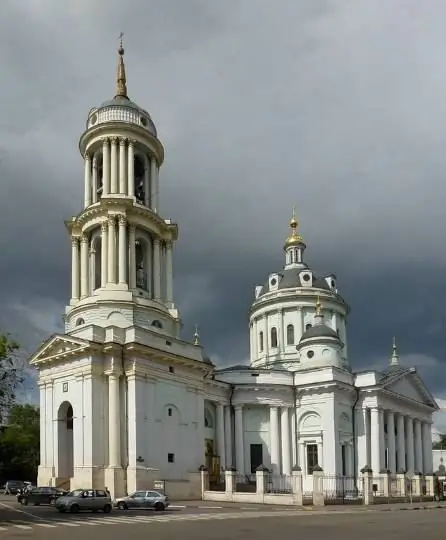
Description of the attraction
The official name of this church is the Ascension of the Lord, but among the people it is better known as the temple of St. Martin the Confessor, in whose honor one of its two chapels was consecrated.
Martin the Confessor lived in the 7th century, the crown of his church career was the throne of the Pope, to which he was elected after the death of Theodore the First. Martin had this title for six years, during which he fought against heresy. For his intransigence, Martin was innocently convicted, he was held in captivity on the island for a year, as a result he was defrocked and sent into exile, where he died.
In Moscow, the first church on the site of the Church of Martin the Confessor was built, most likely, at the very beginning of the 16th century or a little earlier, at the end of the previous century.
In the 80s of the 18th century, a new church building was laid next to the old church. They began to build it by order of the Metropolitan of Moscow Platon. The progress of work significantly accelerated in the 90s of the same century, when the funds were donated by the merchant Vasily Zhigarev, who made a fortune in the tea trade. The author of the project is the architect Rodion Kazakov. The consecration of the throne by Metropolitan Platon took place in 1806.
This temple went down in the history of the capital as the place of the first thanksgiving service, held after the French army left Moscow. The altar of this church was made in the form of an Arc de Triomphe to commemorate the victory over the French. In Soviet times, it was deposited in the Donskoy Monastery. At the same time, the building of the temple itself was damaged during the war of 1812, and over the next ten years its restoration was carried out.
Under the Bolsheviks, the temple lost many of its values and relics and was closed in the 30s. The building housed the archives of the documentary film studio, the storage of the Book Chamber, and other institutions. The consecration of the renovated church took place in 1998.
In Moscow, the temple is located on A. Solzhenitsyn Street. In previous centuries, the prefix “in the Alekseevskaya new settlement” was fixed in its name; this settlement was formed at the beginning of the 17th century. Traders and artisans lived in it, then bread traders were added to them, and Martin's church was also called “the one in Khlebniki”.
One of the remarkable features of the temple that has survived to this day is the wall painting of the early 19th century. It was made by the Italian master Antonio Claudo.






